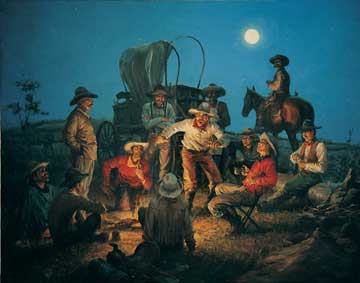
The ancient art of storytelling has actually never
been more relevant for companies than it is today.
We all love a good story. It’s part of our make-up. Part of our DNA. Before the advent of modern communications, stories were the only way that we were able to impart information to each other. And against the clamour of marketing messages across a rapidly increasing number of channels in today’s marketplace, that ancient art of storytelling has never been more important.
People are tired of being talked at; and instead are desperate to be valued and engaged. A great story will do this. It will also fire emotions and will motivate people into action. Essentially, if you engage people in this way you can get them to do anything. Put simply, and in terms marketers can understand, the most successful brands tell their consumers compelling stories and the best stories win.
While on the surface, every brand’s story appears different, there are a number of core steps you can take to ensure you tell yours in a way that will make it stand out and really connect with your audience.
1/ Understand your story
Starting with the obvious… every story has a beginning, middle and end. Either side of that you have a conflict and resolution or a problem and solution.
Start with a call to action, something that sets the characters and action in motion. This is your opportunity to get the reader’s attention and give them a reason to keep reading
Then move onto your conflict (or problem). This needs to be some sort of challenge that the main characters face and are able to resolve at the end of the story before gaining closure and living happily ever after.
One key area where people fall short with their story telling is creating a conflict and resolution which seemingly have no connection to each other. Often this comes from trying to be too clever with your storylines… so keep it simple.
2/ Choose your plot
We all think our stories are original and different, but the reality is there are just seven key story archetypes – and it doesn’t matter if you’re Spielberg or Shakespeare. The challenge for brands is to find out which archetype best suits their brand, and then skillfully, believably and carefully weave their story around this.
The seven basic plotlines are:
• Overcoming the Monster. think everything from Beowulf to David and Goliath to Star Wars.
• Rebirth. A story of renewal, so Sleeping Beauty, A Christmas Carol or The Secret Garden.
• Quest. A mission from point A to point B. The Lord of the Rings is the classic example. But also The Odyssey and Watership Down fall into this category.
• Journey and Return. A story about transformation through travel and homecoming. Alice in Wonderland The Third Man and The Time Machine are all examples of this arhcetype.
• Rags to Riches. Cinderella, Aladdin and Great Expectations all capture this essence of this.
• Tragedy. From the Greeks through Shakespeare, these are stories of the dark side of humanity and the futile nature of human experience. Think Macbeth, Bonnie & Clyde and Julius Caesar.
• Comedy. The antithesis of tragedy, is perhaps the hardest to do well, but is hugely popular and effective when done correctly.
3/ Observe the rule of three
Wikipedia defines the rule of three as “a writing principle that suggests that things that come in threes are inherently funnier, more satisfying, or more effective than other numbers of things. The reader or audience of this form of text is also more likely to consume information if it is written in groups of threes. From slogans (“Go, fight, win!”) to films, many things are structured in threes.”
Think: The Three Stooges, Three Little Pigs, Three Billy Goats Gruff, Goldilocks and the Three Bears, and Three Blind Mice.
A series of three often creates a progression in which the tension is created, built up, and finally released. Similarly, adjectives are often grouped in threes to emphasise an idea.
The American Declaration of Independence is a perfect example of how to use this in practice: life, liberty and the pursuit of happiness.
4/ Choose your medium
Today it’s not just about the written word, you have a number of other effective media at your disposal through which to convey your message – audio, video and photographic are increasingly important, especially as the web becomes more powerful. All of these different media will affect how you tell your story. So make sure you know what media you intend to use and how your message is going to port across into these formats.
5/ Keep ‘em guessing
Andrew Stanton the director of Hollywood blockbuster WALL-E sums this up perfectly: “Don’t give the audience 4, give them 2 plus 2.”
Or in other words don’t give your readers on a plate, let them work stuff our for themselves. This makes for a much more enjoyable and engaging experience overall.